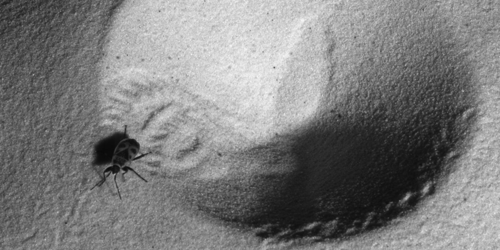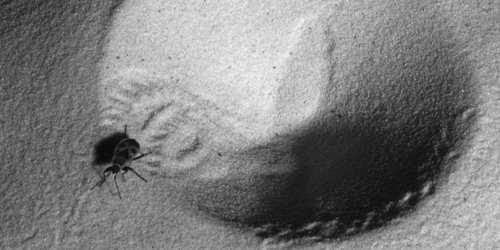Friction Means Life or Death for Ants
To catch prey, antlion larvae—bugs that resemble armored beetles with long pincers protruding from their heads—dig pits in the sand. Unsuspecting ants fall into these pits and then can’t climb up the wall’s steep slides, getting trapped. Now, scientists have studied how objects of different mass slide down steep sandy slopes. They show that light and heavy objects are less likely to slip than intermediately sized ones. The result may explain why ants can’t escape antlion pits but larger insects can.
To test the link between an object’s mass and its propensity to slide down a slope, Jérôme Crassous from the University of Rennes 1, France, and colleagues dropped cardboard-covered metal disks down hills made of millimeter-sized glass beads. They then monitored the motion of the disks, along with any deformation of the beads caused by the disks’ presence.
Since antlions’ pits have sides that slant at the avalanche angle (the angle at which avalanches occur), the team studied bead hills with slants close to this angle. They observed that only objects with intermediate masses would travel downslope. Measuring the pressure and friction forces experienced by the disks as a function of their mass, they found that both had a minimum for intermediate-mass disks. This dip, which isn’t seen for objects sliding along non-sandy surfaces, implies that the laws of friction on sandy surfaces need to be updated. The analysis of images from the experiments revealed that sliding starts when the disk slightly deforms the surface and stops when the disk is heavy enough to make its own pit in the sand, creating a rim of grains that holds it in place.
This research is published in Physical Review Letters.
–Katherine Wright
Katherine Wright is a Contributing Editor for Physics.





